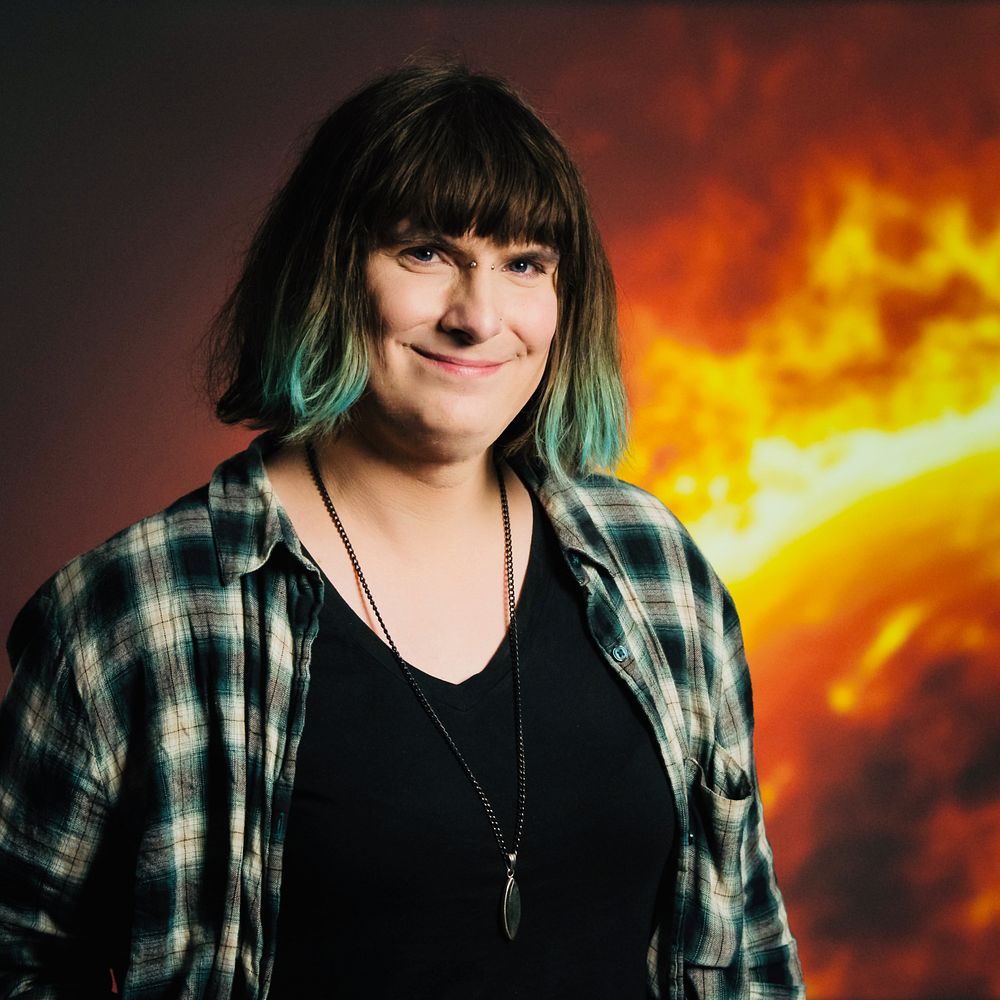
Press release -
Northumbria academic receives prestigious award for space research
A Northumbria University space researcher has received a major award for her research into plasma physics from the American Institute of Physics (AIP) Publishing.
Dr Julia Stawarz, Royal Society University Research Fellow in Northumbria University’s Solar and Space Physics research group, uses spacecraft observations to study plasma turbulence, magnetic reconnection, and related small-scale plasma processes across a variety of plasma environments in our solar system.
She received the 2024 Ronald C. Davidson Award for Plasma Physics, for her research exploring how turbulence impacts magnetic reconnection - a process where magnetic field lines break and rejoin, releasing energy. The study looks into how this works in turbulent environments that are common throughout the universe.
The award is provided by AIP Publishing in honor of Ronald Davidson’s exceptional contributions as Editor-in-Chief of Physics of Plasmas for 25 years. The annual award is presented in collaboration with the American Physical Society’s Division of Plasma Physics and recognizes outstanding plasma physics research by a Physics of Plasmas author.

Dr Stawarz used high-resolution measurements from NASA’s Magnetospheric Mutliscale mission to identify and examine turbulence-generated magnetic reconnection in Earth’s magnetosheath - a region of space where a unique type of reconnection known as ‘electron-only’ has been believed to occur.
This process is well-known to be difficult to study however, Dr Stawarz and her team were able to demonstrate that both electron-only reconnection and the more standard ‘ion-coupled’ reconnection occur in this region. One affects only tiny particles called electrons, and the other affects both electrons and bigger particles called ions.
She found that the type of reconnection that happens depends on how much the magnetic fields are stirred up by the turbulence inside the Earth’s magnetosheath, revealing how energy moves in near-Earth space.
“Spacecraft measurements of the plasmas in our solar system provide us with detailed measurements of fundamental plasma physics that are relevant to plasma environments throughout the universe,” explained Dr Stawarz. “My work mainly involves analyzing these measurements from spacecraft such as NASA’s Magnetospheric Multiscale and Parker Solar Probe and ESA’s Solar Orbiter.”
Commenting on receiving the Ronald C. Davidson Award, Dr Stawarz said: “It is a huge honor to receive this award and to see my name listed alongside all of the amazing plasma physicists that have won it in the past — not to mention Ron Davidson, for whom the award is named. It is always a really nice feeling to see the work that you have been working on and have found so fascinating receiving attention from the wider field.”
Her research paper titled ‘Turbulence-driven magnetic reconnection and the magnetic correlation length: Observations from Magnetospheric Multiscale in Earth’s magnetosheath’ was published in the Physics of Plasmas journal.
Northumbria University is powering the next generation of space innovation, attracting world-leading space academics across a multitude of specialist areas, from satellite communications to space law and policy.
Northumbria collaborates extensively with partners including UK Research and Innovation, the UK Space Agency, the UK Met Office, and over 40 other industrial partners.
Last year the University announced ambitious plans to develop a £50 million space skills, research and development centre, set to transform the UK space industry. The North East Space Skills and Technology centre (NESST) is expected to directly support the creation of over 350 jobs and inject over £260 million into the North East economy over the next 30 years, playing a critical role in the government’s levelling-up agenda and immediately becoming a catalyst for the wider development of the UK space sector in the North East region.
Discover more about how Northumbria University is powering the next generation of space innovation.
Topics
Categories
UNIVERSITY OF THE YEAR 2022 (Times Higher Education Awards)
Northumbria is a research-intensive university that unlocks potential for all, changing lives regionally, nationally and internationally.
Two thirds of Northumbria's undergraduate students come from the North East region and go into employment in the region when they graduate, demonstrating Northumbria's significant contribution to social mobility and levelling up in the North East of England.
Find out more about us at www.northumbria.ac.uk
--- Please contact media.communications@northumbria.ac.uk with any media enquiries or interview requests ---








